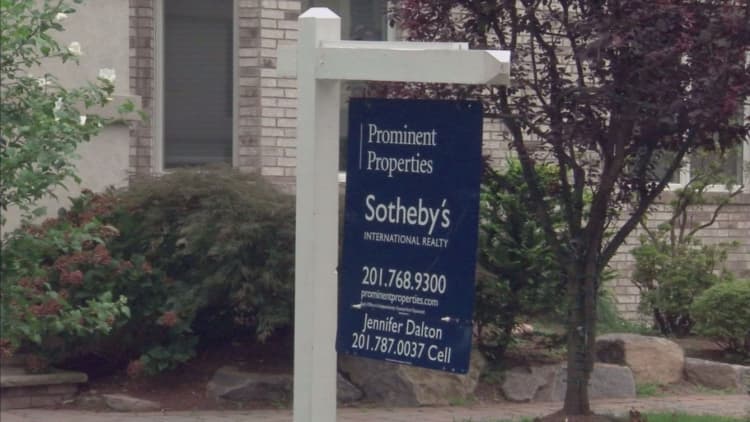
Demand for single-family rental homes has never been stronger and, consequently, more investors are hoping to get in on the game.
From large institutions buying thousands of homes to individual investors hoping to see strong returns on just a few properties, the competition is high. And so is the risk, especially for novices.
New companies hoping to help investors in every phase of the process — and cash in on their growing demand — have ranked large local markets for potential returns. Now, one claims it can gauge right down to the neighborhood level.
Roofstock, an online single-family rental marketplace, is launching a "neighborhood rating algorithm," analyzing more than 72,000 separate Census tracks and ranking their risk. It goes beyond home values and average rent to include dozens of factors, such as income levels, employment rates, education levels, percentage of owner-occupied homes and school district ratings. It then ranks each neighborhood on a scale from 1 to 5, 1 being the most risky.
"As with any investment, whether it's real estate or a stock or bond, you need to compare risk with return, and so what we've done with our star system is created a metric for estimating risk, which is really a measure of volatility or variability of your return," Roofstock CEO Gary Beasley said. "So if you're investing in a 4-star or 5-star neighborhood, your returns might be a little bit lower but your returns might be a little more predictable. There might be a little less variability."
Neighborhoods with higher risk may offer better returns in the short term but will be less predictable. Beasley cites San Francisco as an example. Rents there are currently sky-high downtown, but certain suburbs of the city have very different characteristics and levels of risk. The index breaks a city down into tiny pieces and assesses each piece.
Here's the Roofstock Rating Scale:
- 5-star: Very high employment rates. Above-average income levels and school district ratings. Newer properties above the average home value and mostly owner-occupied.
- 4-star: High employment rates. Average income levels and school district ratings. Average home values. Slightly older properties than in 5-star neighborhoods, but generally high quality and mostly owner-occupied.
- 3-star: Good employment rates. Slightly below average income, with decent school districts. Home values slightly below average. Properties are a mix of new/old, with slightly more owned than rented.
- 2-star: Below average employment, income levels, school district ratings, and property values. Homes are an equal mix of rented and owned.
- 1-star: Lowest employment rate compared to higher-rated neighborhoods. Low income levels, school district ratings and home values. Properties are older, with more rented homes than owner-occupied.
"I think what makes our index different, and I'd argue better, is its granularity," Beasley said. "It's down to the neighborhood level because it's very difficult to describe real estate at a metropolitan level."
There are currently about 16 million single-family rental homes in the United States, about 5 million more than before the housing crisis. While large institutional investors bought thousands of distressed properties and set up a new asset class of rentals, they still make up barely 3 percent of the single-family rental market. The vast majority of rental homes are still owned by small to medium-sized, individual investors, and more novices want to get in on the currently strong demand.
"It's a new landlord nation, where everybody is renting out their basement. When somebody moves up they don't sell their old place, they rent it out to somebody else," said Glenn Kelman, CEO of Redfin, a real estate brokerage.
Roofstock is not alone in the market. Companies like HomeUnion, Investability and TenX aim to guide smaller investors in picking properties. Some help with the sales, management and even renovation of the homes.
Despite the growth of this asset class, most individual investors — 70 percent according to Roofstock — purchase properties within an hour's drive of where they live. This is likely so they can manage the properties themselves. With the huge growth of rental management companies, however, investors can look much farther for better returns. That means they need more data. The Roofstock index is free, but investors must log on and become a member of the site.
"A big part of our strategy is data — and then being able to monitor all that information and make recommendations as to which markets might look interesting for different strategies," Beasley said. "So it is very much, from our perspective, a tech play because we're working through this data but our goal is to simplify all that."
While a risk index is certainly helpful, it's not foolproof. Property values and local market dynamics can be influenced by unexpected factors, rental demand can change due to construction, and tenants are not always reliable. As with any investment, buyer beware and be informed.


